D&D Monster Monday: Displacer Beast
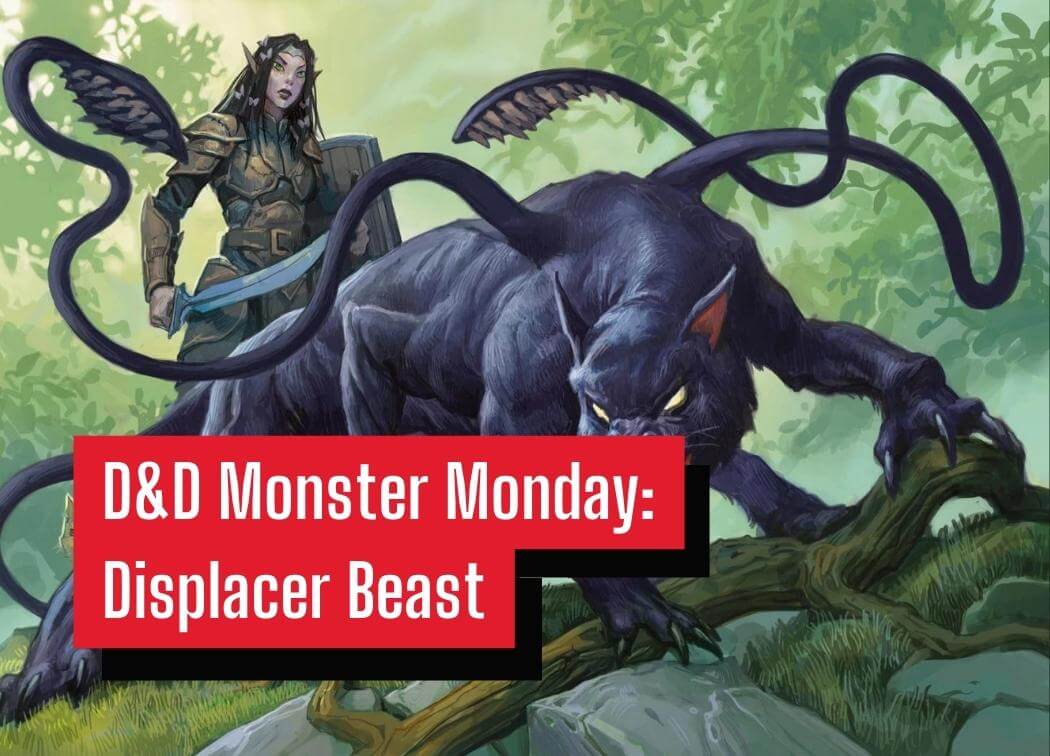
Out of the corner of your eye, you see two panthers dart towards you from behind the throne. They are obscured and warped by some magic. You raise your shield in anticipation of their inevitable pounce, but it never comes. You feel the spiked tentacles impale your unprotected back as the displacer beast bears down on you.
Many of the low CR creatures that I’ve covered in previous D&D Monster Mondays don’t work well as minions or trash mobs in higher-level play. The displacer beast is an exception to this theme as they are practically built to be minions for powerful creatures. It looks like a panther with some extra limbs and two tentacles sticking out of its back. It’s a mean, lean, killing machine.
Thematically, displacer beasts are one of my favorite D&D monsters. They have some unique traits and abilities for a low CR creature which help to keep them relevant throughout various tiers of play. As far as combat is concerned, the displacer beast is a martial character’s nightmare. It has a ton of mobility and has reach attacks which allow it to be just out of range for many characters.
You can also find the displacer beast on page 81 of the 5e Monster Manual (MM).
Displacer Beast Lore
Just like the Eladrin the displacer beast can trace its origin back to the Feywild. They roamed the Feywild until they were captured by the Unseelie Courts and trained to be warriors. The displacer beasts were selectively bred so that the best and most powerful warrior lines would survive. Their primary task was to hunt wondrous beasts such as pegasi.
Displacer beasts are much more intelligent than most animals, even for creatures of the Feywild. These beasts that were kept in captivity outsmarted and outran their captors and once again roamed freely throughout the Feywild for a short time. That is until the Seelie Court found out about them and threw their blink dogs at the displacer beasts.
At this point, the displacer beasts were beaten back to the edges of the Feywild. They then crossed over to the material plane in a desperate move to survive as a species. They now work in either small packs or will align themselves with powerful evil creatures. Displacer beasts will generally only ally with another creature if there’s a benefit for the displacer beast. They’re not slaves and are too cunning and dangerous to be kept unwillingly by most creatures.
They will typically either hunt down prey or guard people or things for their masters. They make for excellent bodyguards. Wild displacer beasts will hunt much like big cats except they’re known to toy with their prey as a form of entertainment.
Displacer Beast’s Stats and Abilities
The statblock for the displacer beast can be found on page 81 of the MM.
Base Stats
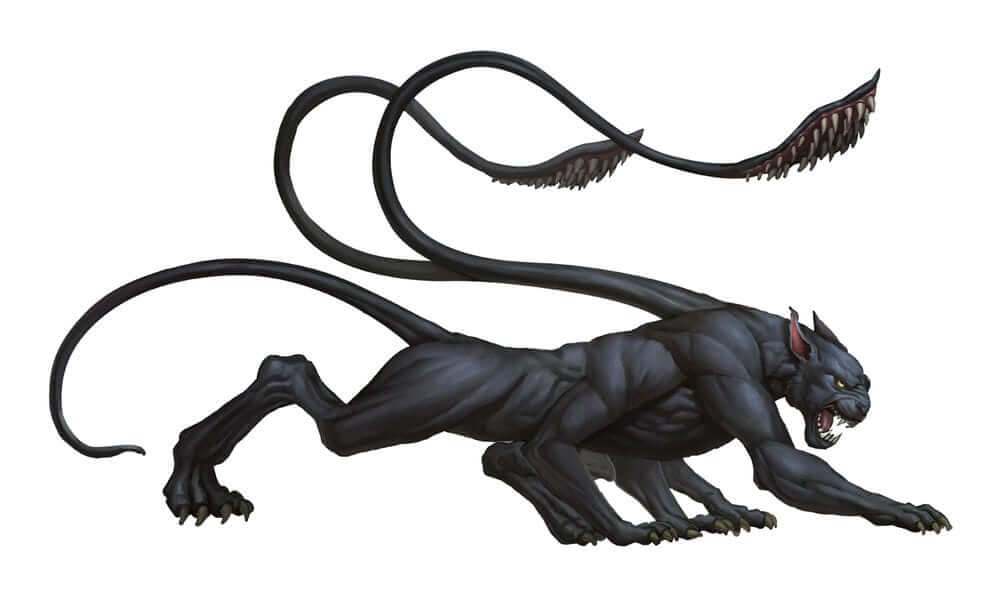
Size: Large
AC: 13
HP: 85 (10d10 + 30)
Speed: 40 ft.
STR: 18 (+4)
DEX: 15 (+2)
CON: 16 (+3)
INT: 6 (-2)
WIS: 12 (+1)
CHA: 8 (-1)
Despite the 6 in Intelligence and the 8 in Charisma, the displacer beast has a very solid spread of stats for a CR 3 creature. It has a good-sized health pool with a serviceable AC of 13. It also has pluses in the three major saving throw ability scores which is another benefit. Its 18 in Strength gives it both some solid extra damage as well as a benefit to breaking out of grapples.
Resistances, Immunities, Saves, and Skills
Senses: darkvision 60 ft., passive Perception 11
CR: 3 (700 XP)
There isn’t a lot to write home about in this section, but because the displacer beast has some solid stats and AC you wouldn’t expect a lot of resistances and immunities. The darkvision and above-average passive Perception are two bonuses that fit in with the creature thematically. It’s a big cat that has a knack for both hunting prey and guarding valuables. It shouldn’t be easy to sneak past, and it isn’t.
Abilities and Traits
Avoidance. If the displacer beast is subjected to an effect that allows it to make a saving throw to take only half damage, it instead takes no damage if it succeeds on the saving throw and only half damage if it fails.
Displacement. The displacer beast projects a magical illusion that makes it appear to be standing near its actual location, causing attack rolls against it to have disadvantage. If it is hit by an attack, this trait is disrupted until the end of its next turn. This trait is also disrupted while the displacer beast is incapacitated or has a speed of 0.
The displacer beast’s traits are the primary reason this is such a powerful creature that translates well into higher-tier play. Avoidance is a flat-out better version of Evasion that rogues and monks get at level 7. It works on any saving throw that it could take half damage, not just Dexterity saving throws. This gives it some extra survivability against magic users and AoE abilities.
Displacement is a permanent Blur but again, better. If the displacer beast has a speed above 0 and is not incapacitated it forces all attack rolls against it to have disadvantage. Truesight, blindsight, and the ability to see past illusions will not help you against the displacer beast. However, once it is hit by an attack (not a saving throw!) the effect is over until the end of its next turn.
Actions
Multiattack. The displacer beast makes two attacks with its tentacles.
Tentacle. Melee Weapon Attack: +6 to hit, reach 10 ft., one target. Hit: 7 (1d6 + 4) bludgeoning damage plus 3 (1d6) piercing damage.
Our other CR 3 creature that we’ve looked at so far, the minotaur, also had a +6 to hit so this is a pretty standard attack modifier for martial-focused CR 3 creatures.
The 10 ft. reach on its Tentacle attack is an excellent tool for the creature to use. It can stay just out of range of most martial PCs which can give it a bit more room to escape using its 40 ft. of movement.
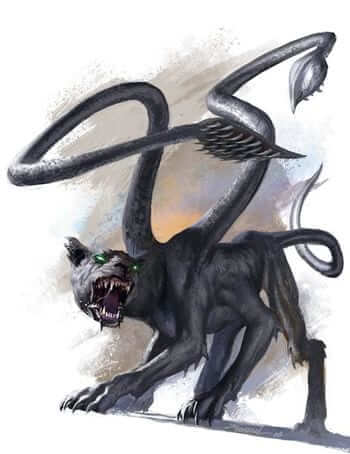
Displacer Beast’s Strengths
Survivability Outside of High AC
Many times when a creature is considered to have great survivability they have a high AC and large health pool. While 13 AC is pretty decent for a CR 3 creature and 85 HP is an above-average amount of HP the displacer beast is not reliant on these stats at all for its survivability. Its two traits Avoidance and Displacement give it more survivability by helping the creature avoid taking any damage at all.
AoE damage is essentially automatically halved and there is a good chance that the displacer beast can avoid it entirely thanks to its high Dexterity and Constitution. In general, it has very solid saving throw stats so it has a great chance of passing any of those damage-dealing saving throws.
Displacement is such a powerful ability thanks to how useful advantage/disadvantage is in 5e. The best part is that it is not dispelled upon taking damage. It has to be hit by an attack which the user has disadvantage on making this a difficult trait to shut down.
When looking at survivability in D&D 5e avoiding damage will always be better than healing damage that has been taken. In many cases, this may involve using an action or bonus action to use a spell or ability or sacrifice stats, AC, or HP to do so. The displacer beast doesn’t lose out on much to gain these two traits and it makes the creature a very powerful adversary for low-level play and gives it some room to breathe against higher-level adventuring parties.
Mobility and Maneuverability
40 ft. of movement is above average in D&D and it’s also 10 ft. of movement more than the average PC will have. Couple this with the fact that your Tentacle attack has a reach of 10 ft. and you have a creature that has roughly 15 ft. of extra movement compared to the average PC.
That’s a large amount of movement if we assume the average PC has 30 ft. of movement, the displacer beast has 1.5x more movement due to the extra movement that the 10 ft. of reach gives it. I say this because if the displacer beast has a further range away from the target, it has 1 “extra” square it can move while still being able to attack a target on that turn. It can use this movement to move away after it attacks or gets into a more ideal position for the next round.
All this mobility allows the displacer beast to run around the battlefield and constantly look for a better position to assault its target with. It also makes it harder for frontline characters to stop the creature from picking off the less-armored members of their adventuring party. The party will spend just as much time trying to run out of range of the displacer beast as dealing damage.
The Displacer Beast’s Weaknesses
Incapacitated and Movement Hindering Effects
Once the displacer beast loses its Displacement ability it does become a lot less of a threat. 13 AC is still a decent amount of AC, but that’s all it has for defenses from direct attacks. The creature was created with the assumption that Displacement will be active for most (if not all) of the attacks made against it. If a PC or creature can remove disrupt the ability regularly the fight will be very one-sided.
Any sort of ability or spell that afflicts the displacer beast with the Incapacitated condition will immediately disrupt Displacement. In addition to this, the creature will be unable to use its action or bonus action. This also depends on if the creature was stunned, petrified, or paralyzed as all of these conditions also give the Incapacitated condition to the target.
A monk with Stunning Strike and the Sentinel feat is going to be a displacer beast’s worst nightmare. They can match the creature’s movement at this point and have quite a few ways to remove its great mobility and Displacement.
Lack of Attack Options
A 10 ft. reach weapon is awesome, however, it’s the displacer beast’s only weapon. The reach is nice, but it doesn’t add much of a buffer between the creature and its target. Even though they have a lot more movement than the average PC, if they have to spend all 40 or close to 40 ft. to reach the target they leave themselves wide-open to retaliation from the target.
After 1 or 2 rounds the party is going to catch on to what the displacer beast can and can’t do. It doesn’t have spells or other actions that it can use to force the party to switch up its tactics mid-fight.
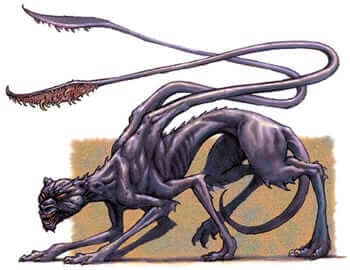
How to Play a Displacer Beast
Focused Killer
Displacer beasts are hunters and even as bodyguards or guards, they’ll have these same instincts. They are both intelligent and wise enough to work together with other displacer beasts or creatures to focus down the most threatening foe. Typically these will be the magic users of the group.
They’ll have access to AoE spells that have a better shot at dealing at least some damage than the average attack. However, the most threatening thing they’ll have are crowd control spells that could disrupt Displacement. These targets will generally have the lowest AC. These are all basic observations a displacer beast could make early on in a fight.
Once a target has been selected the creature is going to hunt it until it is down. That’s what the displacer beast has been bred and taught to do. If a different target shows itself to be a higher-valued target the creature may make a decision mid-fight.
The party is going to have to focus on stopping your displacer beast(s) from dismantling their target. They’ll have to act on the defensive and be sure to not split too far apart from each other. Secluded targets are a displacer beast’s playground.
Keep Your Prey at Arm’s Length
The displacer beast will almost always have a buffer between themselves and their target. Use this to your advantage. Run at your target, make your two Tentacle attacks, and use the rest of your movement to get into a better, further position. This forces your target to have to move straight towards you to have a hope of cutting you down.
If they have to do this their back-line is probably ripe for the taking. At this point, you should risk an opportunity attack from a melee PC and dart towards their unprotected back-line. It isn’t an issue if Displacement gets disrupted by the attack of opportunity since you regain the use of it at the end of the turn regardless.
You’ll want to stay away from groups of enemies. Once you’re staying in melee range you have created an issue for yourself. You can’t run away easily and you have made it easy for your enemies to potentially incapacitate you and then pile onto the displacer beast.
When you use a displacer beast you are in it for the long haul. You value frequent, sustained damage due to your ability to avoid most incoming attacks.
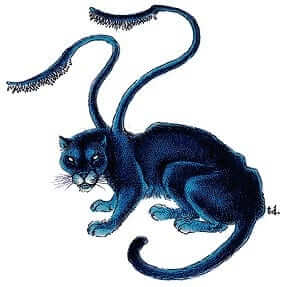
Conclusions
The displacer beast is another simple, but flavorful creature that I love to throw at my party. They’re also a prime example of a creature that works well in all tiers of play. It has solid mobility and excellent defenses and didn’t have to sacrifice much to gain them.
The displacer beast has been one of my favorite creatures since the early editions of D&D. It’s an iconic creature. I’m glad that the 5e version of it stays true to form and is a well-designed foe.
Displacer beasts also work well as small packs of wandering hunters as well as (dis)loyal guard dogs for powerful evil foes. There’s a lot of variety that their lore and statblock offers them so be sure to showcase this. They can adapt to their surroundings in a split second and make for terrifying hunters.
